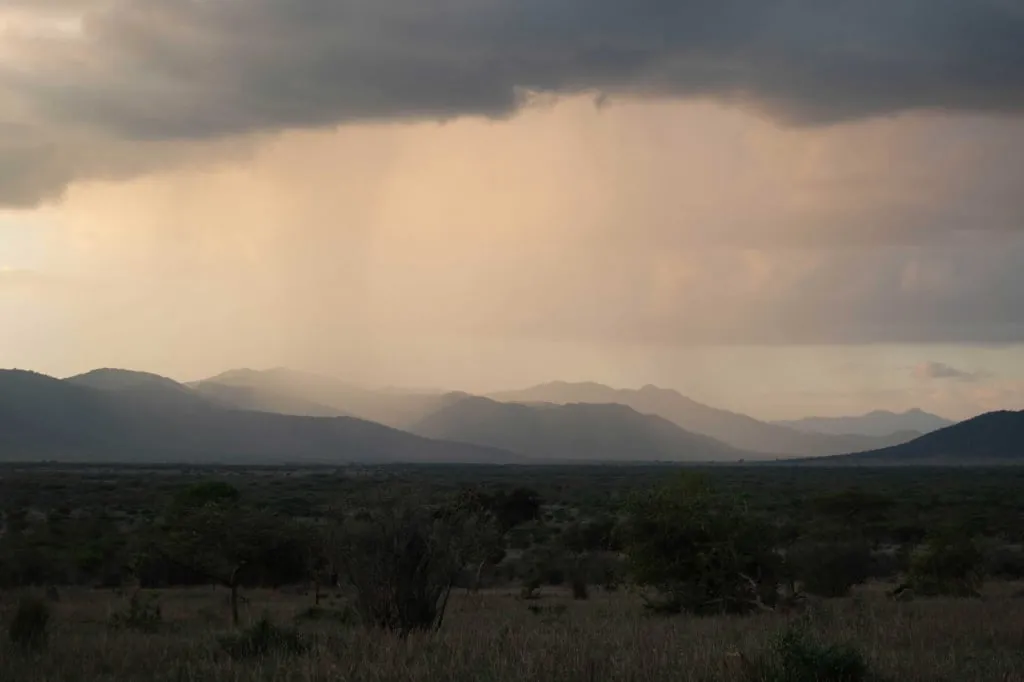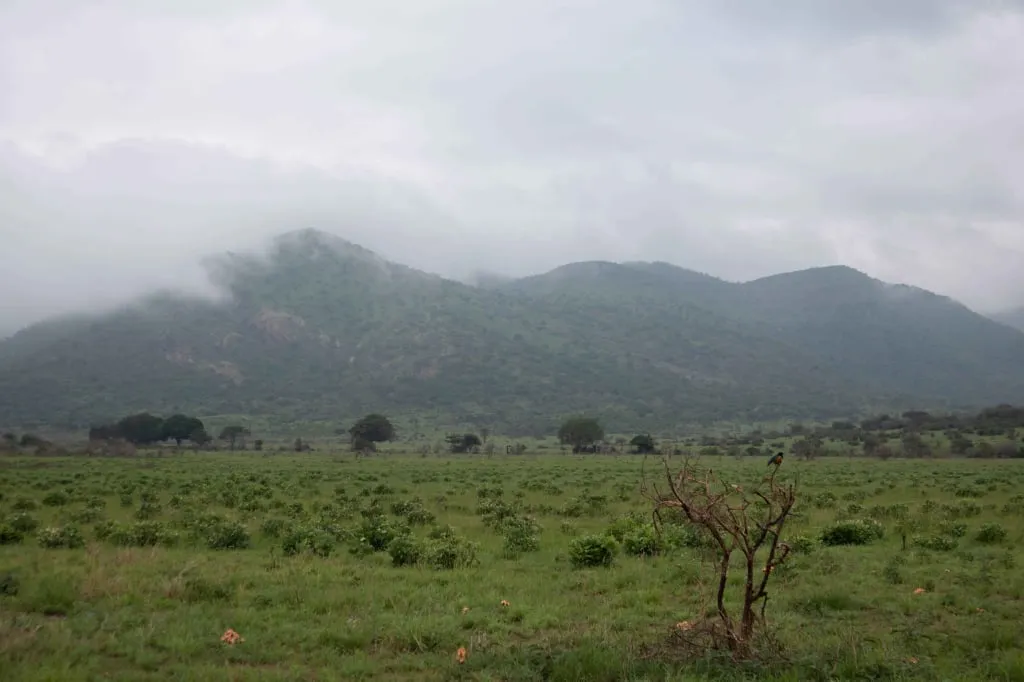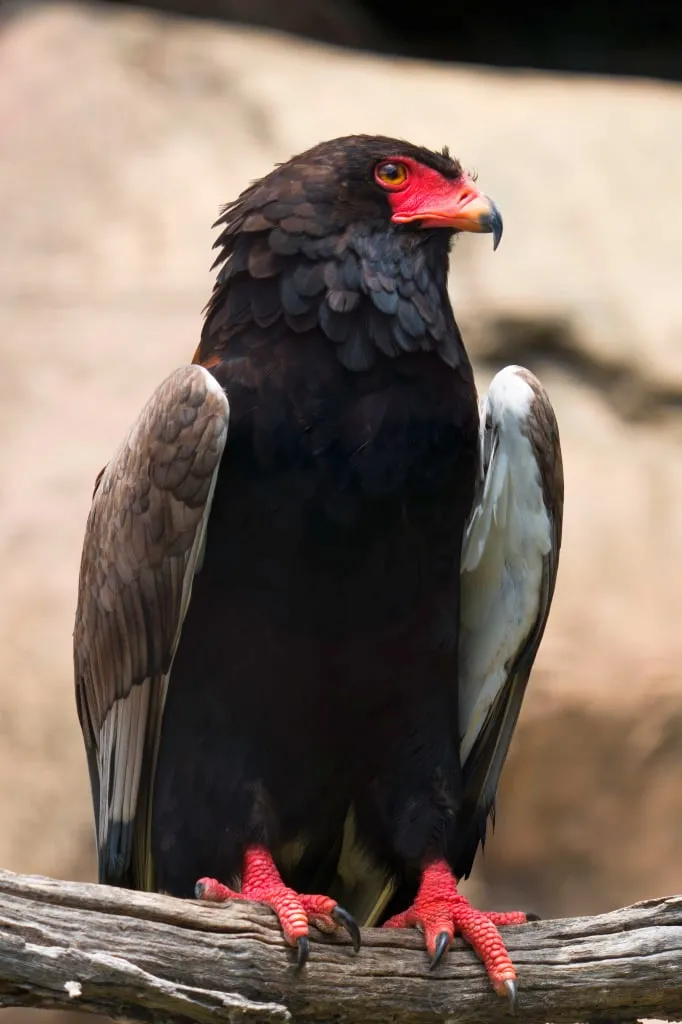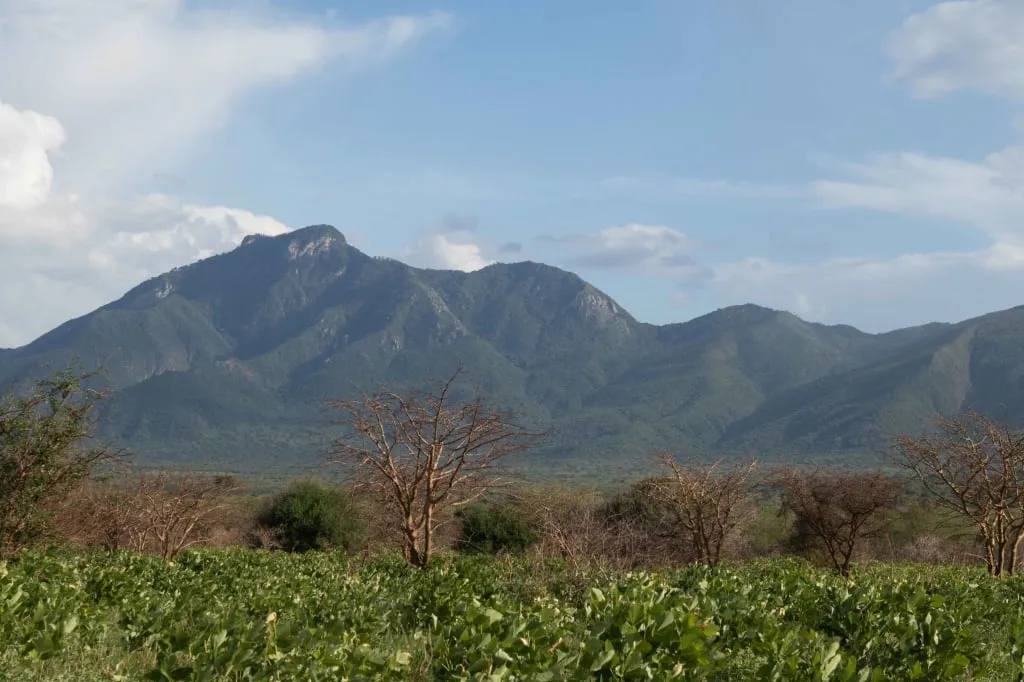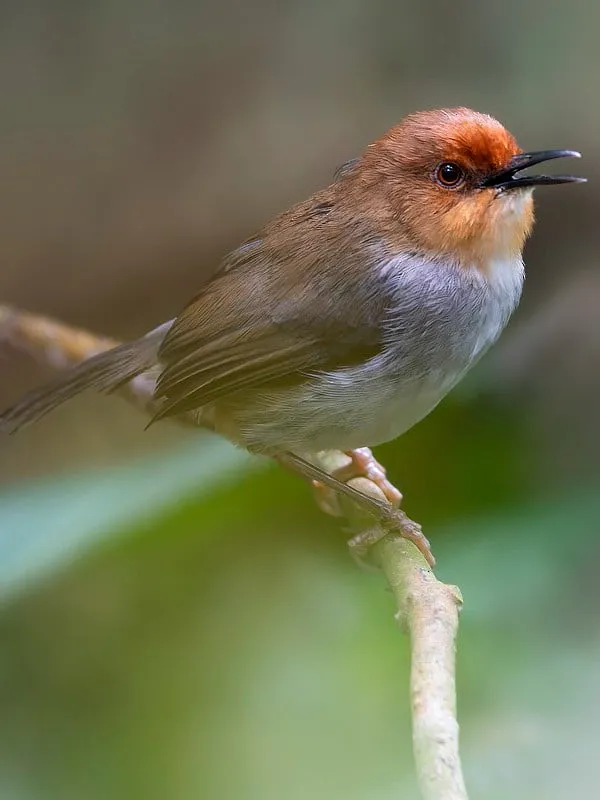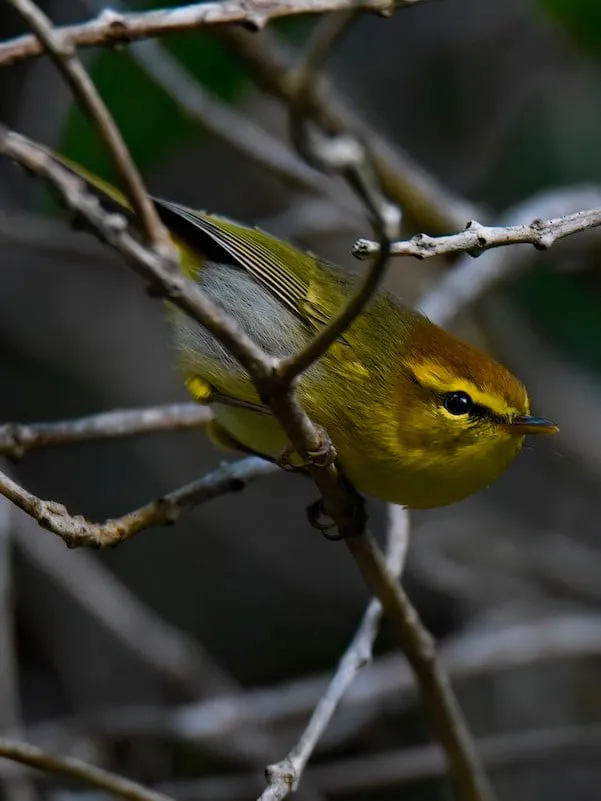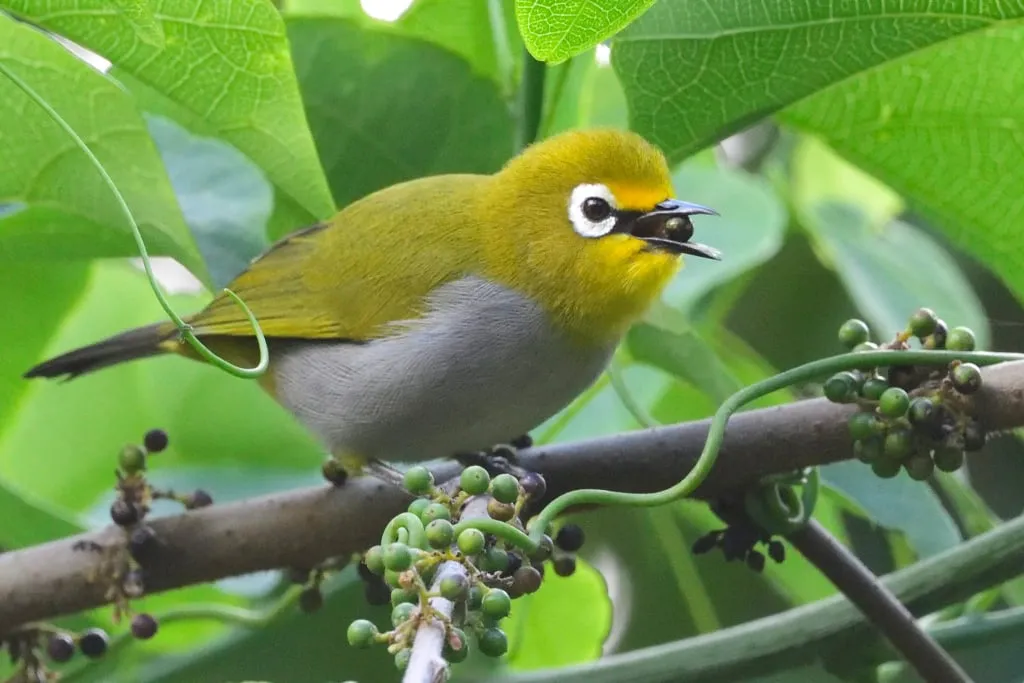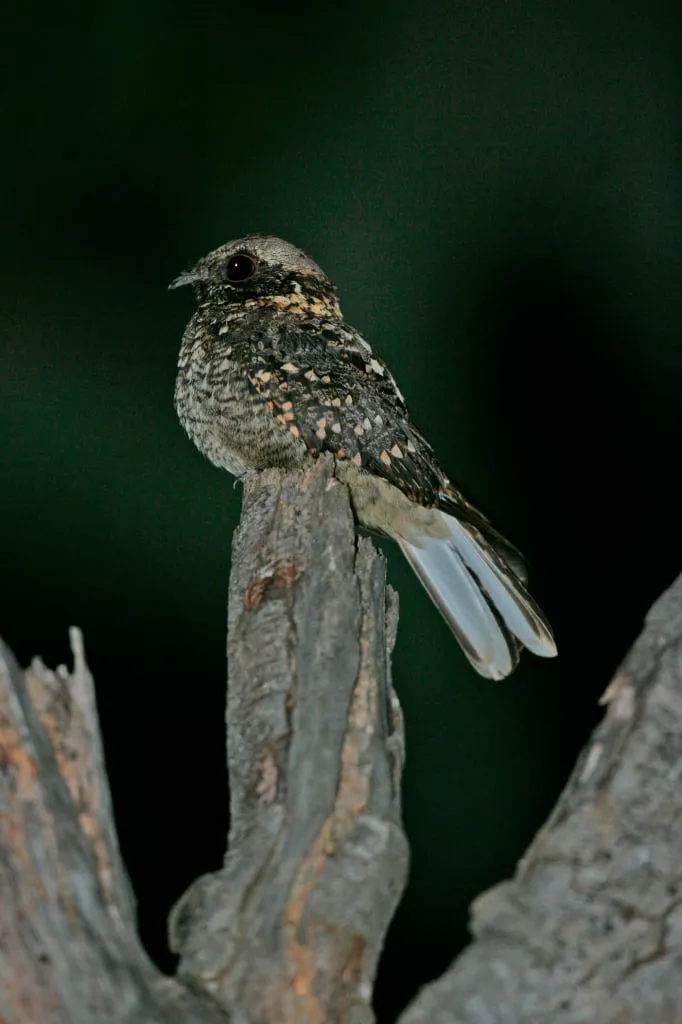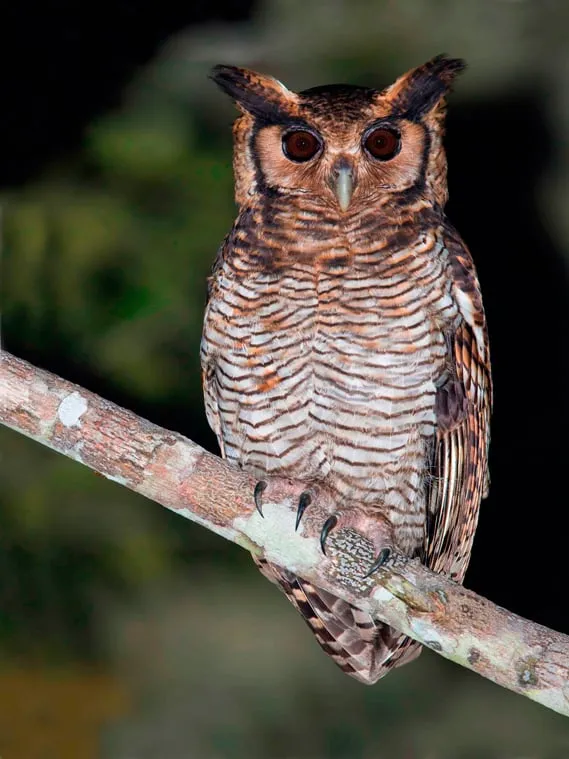When we think about the north of Tanzania, the first places that come to mind are the Serengeti and Ngorongoro, the famous Mt Kilimanjaro, and the slightly less popular but also stunning Tarangire National Park and Lake Manyara. All of them are certainly interesting for birders: in these and neighboring locations you can find many hundreds of bird species. However, there are many more places in the north of the country that inspire adventurous bird lovers from all over the world to go on birding tours to Tanzania.
In the northeast of Tanzania near the border with Kenya, there are several important bird areas, still rich in species diversity despite the growing human interference. You can often hear the news that the mountain forests of the Usambara and Pare mountain ranges are being actively logged and replaced by settlements, plantations, and agricultural land, as well as by artificial forests where trees are planted for later logging. However, between these mountain ranges and the Kenyan border, there is a large protected area where hundreds of bird species can be found. We are talking about Mkomazi National Park. Moreover, there are numerous smaller conservation areas dispersed throughout the Usambara and Pare Mountains. In this article we will cover everything you can expect to see in those areas on a Tanzania birding trip.
Mkomazi National Park
Mkomazi is home to over 400 species of birds. Most of the area is forested, but there are plenty of open spaces too. You can also see some lonely rocky hills overgrown with gallery forests. Precipitation is scarce here, as most of it falls to the east of Mkomazi without crossing the Usambara Mountains, which are a natural barrier to the national park. Southern Pare Mountains shield the park from the West, continuing the range of the Usambara. And from the north, Mkomazi borders the Tsavo West National Park, located in Kenya. There are no natural barriers between them, so there is a constant and active migration of animals between the two parks.
If we try to find the most interesting and rare birds in Tanzania, taking advantage of the park's border location, it’s possible to list the following species: the Yellow-vented Eremomela (Eremomela flavicrissalis) sometimes can be spotted here at the southernmost point of its range, as well as the Somali Crombec (Sylvietta isabellina), Violet Wood Hoopoe (Phoeniculus damarensis), Shelley's Starling (Lamprotornis shelleyi) and the Three-streaked Tchagra (Tchagra jamesi). The usual habitats of these species are north of Kenya, in Ethiopia, and in Somalia.
One of the most interesting birds seen in Mkomazi is the Friedmann's Lark (Mirafra pulpa). Not much is known about them. There are only three limited locations where they have ever been observed: in southern Ethiopia, in central Kenya, and on the Kenya-Tanzania border. In the latter case, it was within a small area that included Mkomazi. The Friedmann's Lark prefers shrub thickets, but not in arid areas. In Tanzania, it was spotted during the rainy season. This bird is considered very shy - it would be great luck to find it in the national park.
There are a few species here that are currently classified as endangered. Those are the Secretarybird (Sagittarius serpentarius), White-headed Vulture (Trigonoceps occipitalis), Lappet-faced Vulture (Torgos tracheliotos), Hooded Vulture (Necrosyrtes monachus), White-backed Vulture (Gyps africanus), Rüppell's Vulture (Gyps rueppelli), Bateleur (Terathopius ecaudatus), Battle Eagle (Polemaetus bellicosus) and Steppe Eagle (Aquila nipalensis).
Among migrating species, the Corn Crake (Crex crex) and the Pale or Pallid Harrier (Circus macrourus), among others, visit the lands of Mkomazi.
Parts of the zone named South Pare Mountains lie right at the western border of Mkomazi.
South Pare Mountains
In northeastern Tanzania the Eastern Arc Mountains begin with the Northern Pare Mountains and continue south with another mountain chain named Southern Pare. They divide the plateau into the main part of Tanzania and the forested Mkomazi National Park, which is nestled against the Kenyan border. The important bird zone includes several clustered forest areas, but only one of them, the Chome Forest Reserve, is well studied. Basically, most data on birds relies on observations in that reserve.
Among interesting species observed in the Southern Pare, there are the Sharpe's Akalat (Sheppardia sharpei) and the Red-capped Forest Warbler also known as the African Tailorbird (Artisornis metopias). Both of these species have been recorded near the highest point of the mountains, Shengena Peak, 2463 meters (8,081 feet). The Yellow-throated Woodland Warbler (Phylloscopus ruficapilla) was observed in approximately the same area. The Grey Tit-flycatcher (Myioparus plumbeus) was seen in the lower part of the reserve.
Among the endemic species, the South Pare White-eye (Zosterops winifredae) can be found here. The English name of this bird tells us about its background: the South Pare White-eye lives only here - in the Southern Pare Mountains in Tanzania and its range is very limited.
In total, the white-eyes family (Zosteropidae) has more than 140 species, of which eight live in Tanzania, and three are endemic to this country. It can be difficult for the inexperienced observer to distinguish one species from another. To do so, one must closely examine the details of the typical olive-yellow plumage coloration, and the width of the white ring around the eyes.
West Usambara Mountains
This mountain range was originally covered with dense ancient forests. The tropical forest that remains here is about 30 million years old. The Usambara Mountains are said to be one of the most biodiverse regions in the world. There are many endemic plants and animals hiding among stunningly beautiful mountainous landscapes. For example, the African Violet (Saintpaulia), that is very popular as a houseplant around the world. One of the main reasons behind the large number of endemic species here is the unique environment of this place, particularly the altitude and the large amount of precipitation in the mountains.
In recent decades, the intensity of land cultivation has increased in the region, which affected bird habitats, among other things. Large numbers of trees have been cut down, and the forest areas have become fragmented and smaller in size. Since the beginning of the 20th century, more and more farms, plantations, and artificial forests cultivated for valuable timber have appeared here. Dozens of important bird areas still remain, but to identify them, you have to look closely at the ornithological map.
In one of the forest reserves of the Western Usambara Mountains, it’s possible to observe African Black Swifts (Apus barbatus) on rocky ledges. The Sharpe's Starling (Pholia sharpii/Poeoptera sharpii) lives in the tree crowns. This species is rare here, and it would be a stroke of great luck to find it. Forest edges often host a species considered almost endemic to this region - the Montane Nightjar (Caprimulgus poliocephalus).
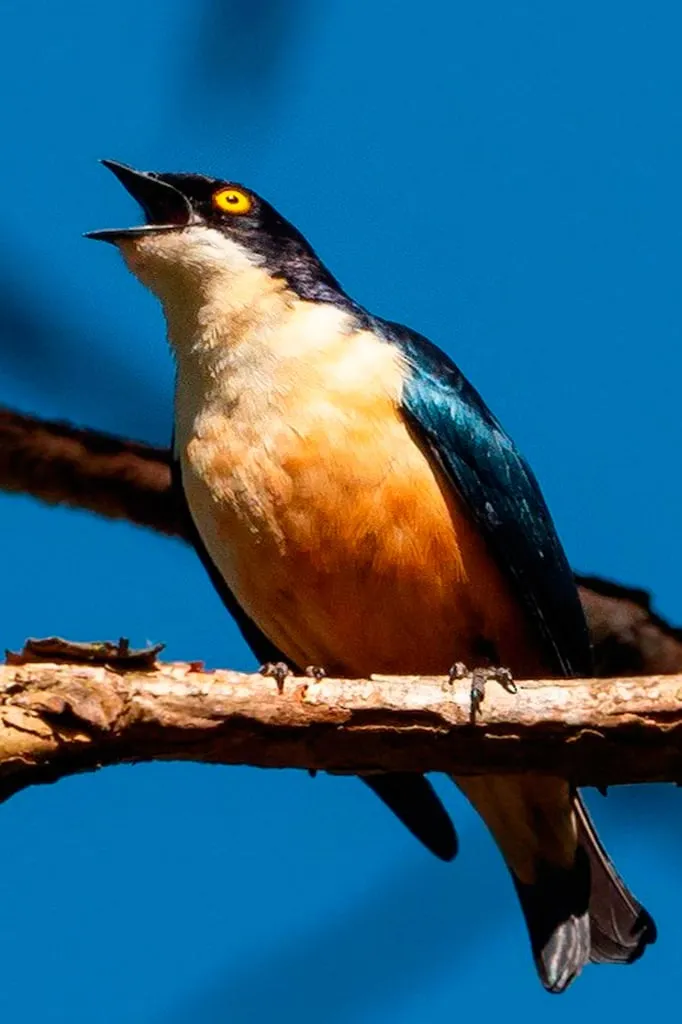
The birds of the western part of the Usambara Mountains are less well studied than those of the eastern part, yet birdwatchers often venture into these areas and note two to three hundred species in various locations.
East Usambara Mountains
When we hear about the high number of endemics in the Usambara Mountains, it is the eastern part of the mountains that is most often referred to, although the local bird areas seem even more fragmented than those of the Western Usambrara. This is a consequence of the increasingly intensive cultivation of land in these mountains. The forests here were actively being cleared first for coffee plantations and then for tea plantations. As in the Western Usambara Mountains, there are about two dozen forest reserves here, all of them small in size. Nevertheless, the Eastern Usambar Mountains are one of the most important places in all of continental Africa, where the task of ornithologists is to preserve birds that are on the verge of extinction. This means that these places should attract as many birders as possible.
The Usambara Eagle-owl (Bubo vosseleri) is observed in the mountain forests of East Usambara. Ornithologists disagree on whether to consider it a separate species or a subspecies of the Fraser's Eagle-owl (Ketupa poensis), in which case it should be classified as Ketupa poensis vosseleri. The Usambara Eagle-owl follows many of the habits of the Fraser's Eagle-owl, and can be distinguished by small details in plumage coloration and vocal features, but the differences are slight. In any case, the Usambara Eagle-owl is endemic to Tanzania, first seen in the northeastern Usambara Mountains and later in the Uluguru Mountains. Along with the Udzungwa, those mountain ranges are particularly important for the protection of wildlife diversity in the East African Rift.

Interestingly, the Sokoke Scops Owl (Otus ireneae) was recorded in the Eastern Usambara in 1992. Now it is classified as Endangered. The owl has a very limited range, there are three small isolated populations: two here, in this part of the Usambara Mountains, and one near the coast of neighboring Kenya. This species is very sensitive to changes in its habitat: if the forests reduce in size, and especially if the trees of the genera Brachylena and Cynometra diminish, the habitat range of the owl decreases. Another factor that threatens the existence of this species is the global climate change. Unfortunately, scientific studies modeling the population size in the future predict the extinction of this species in the Usambara Mountains. And for observers, the difficulty also lies in the fact that the owl is an exclusively nocturnal animal.
One of the most unusual and elusive species observed in the Usambara Mountains is the Long-billed Forest Warbler (Artisornis moreaui). It is a subspecies with the scientific name Artisornis moreaui moreaui that is endemic to Usumbara. Now the species is on the verge of extinction, with the estimated number of individuals from 50 to 249. The problem is still the same - habitat destruction. But scientists need more data on the range of the Long-billed Forest Warbler to clarify the status of the population. Interestingly, this species is noted in the current checklists for the Amani Nature Reserve. By the way, that place is one of the most abundant in the number of bird species. Nearly 350 species live there.


It is interesting to find the Dapple-throat (Arcanator orostruthus) here, whose shrinking range and population decline are alarming. Of particular interest to bird watchers is the Swynnerton's Robin (Swynnertonia swynnertoni) which has a noticeable white crescent on its breast.

The Usambara Hyliota (Hyliota usambara) and the Red-headed Bluebill (Spermophaga ruficapilla), or more precisely its subspecies Spermophaga ruficapilla cana, are considered endemics of the region. The latter is a beautiful bird with a glossy black body, and bright red head and breast. Both species have tiny ranges. So it's a fascinating task for a birder to find their habitats and meet these amazing birds which, alas, have low population sizes and densities.
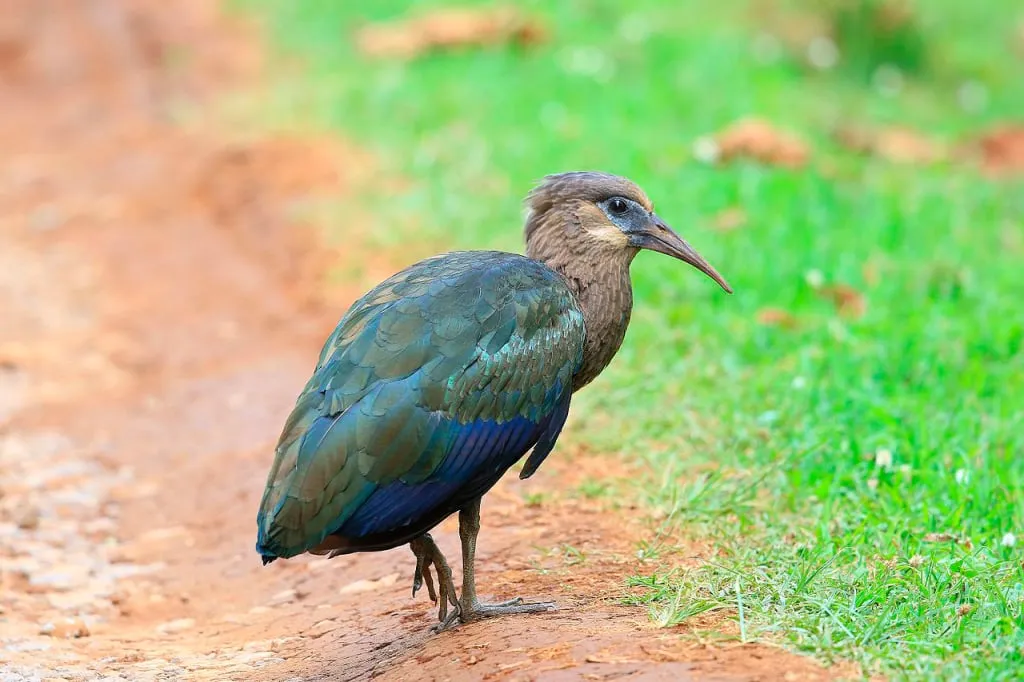
The Olive Ibis (Bostrychia olivacea) is not a common species here, but you still have a chance to observe this beautiful bird. This 70-cm (27.5-inch) ibis chooses a suitable tree, usually a dead one, and uses it as shelter during the nights, flying out during the day to hunt along certain routes. Mombasa Woodpeckers (Campethera mombassica) and Magpie Mannikins (Spermestes fringilloides) live here too.

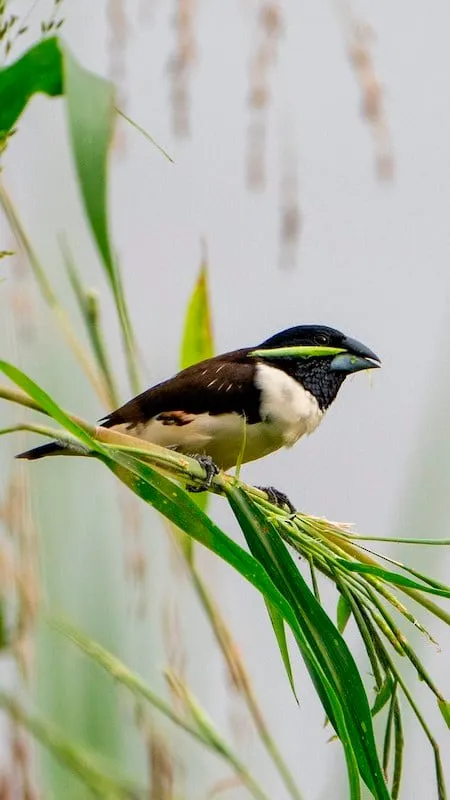
Other endemics of the East Usambara include the Usambara Akalat (Sheppardia montana), Montane Tiny Greenbul (Phyllastrephus albigula), Usambara Thrush (Turdus roehli), Usambara Weaver (Ploceus nicolli) and the Banded Green Sunbird (Anthreptes rubritorques). More endemic species have also been observed in the region, so the likelihood of finding them in one of the small forested areas of the Eastern Usambara Mountains is high.

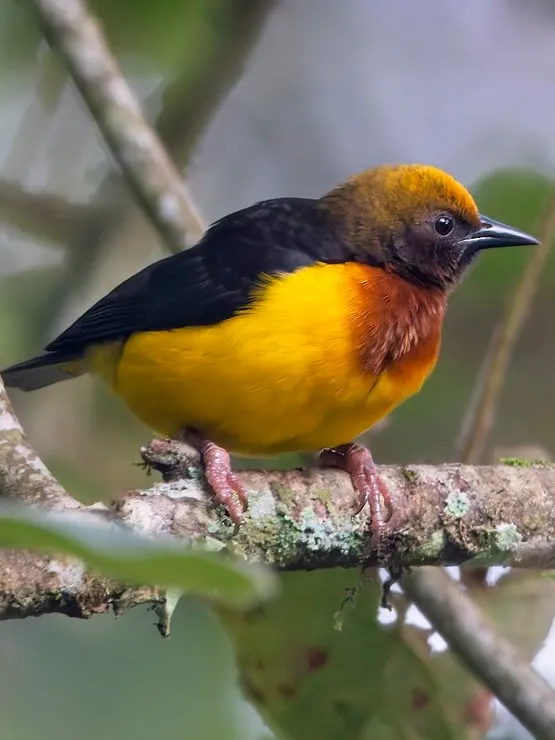
The Amani Sunbird (Hedydipna pallidigaster) named after a forest reserve, deserves special attention. The scientific name of the species, Hedydipna, comes from the Greek "hēdu-deipnos - ἡδύ-δειπνος", which can be translated as "to eat sweets, to eat delicacies". This refers to the passion of these birds for delicious flower nectar. In spite of the local roots of the species name, the Amani Sunbird is endemic neither to these forests nor to Tanzania, as it lives in other places also, for example, in Kenya.
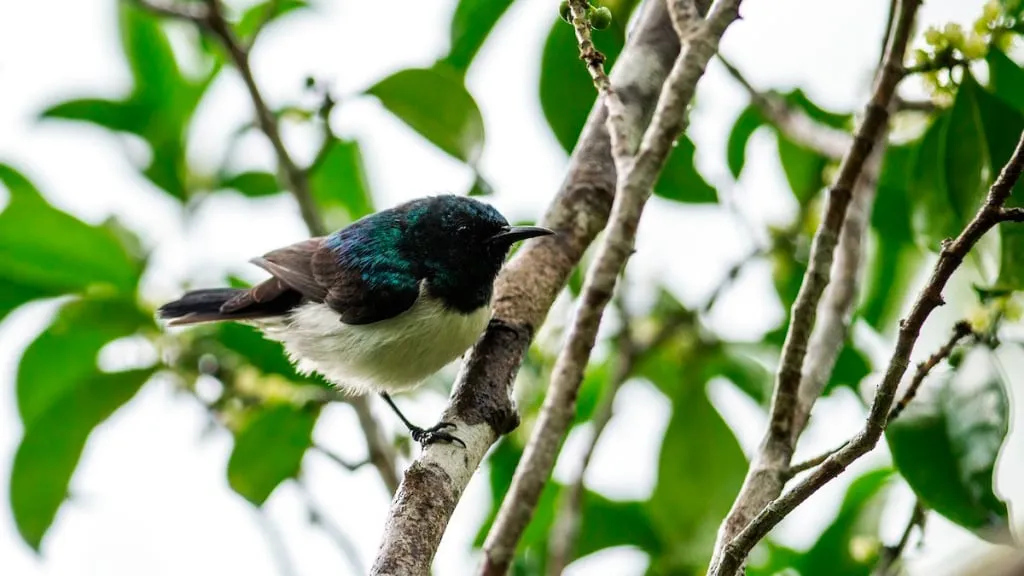
To the east of the Usambara Mountains you can find small bird areas north and south of the city of Tanga at the coast of the Indian Ocean. And south of the Usambara Mountains there are coastal forests of Muheza, Handeni, and Pangani districts. The bird species lists for those locations are not very large, so we will skip them here. Even further south there are larger important bird zones, formed around two well-known and large cities. You can read about the birds that inhabit them in the article about birdwatching in Bagamoyo and Dar es Salaam. And you can find out about other amazing bird areas in Tanzania in our overview article "Tanzania. Top 10 Locations for Birdwatching".











